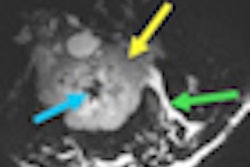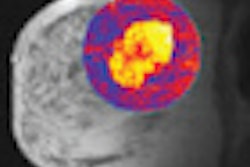Dear Women's Imaging Insider,
Using ultrasound to follow up abnormal mammographic results tends to be a less-invasive, cost-effective choice, but ultrasound's specificity leaves a bit to be desired. It can be difficult for radiologists to distinguish between benign and malignant lesions once they've been identified. Is there a way to boost breast ultrasound's performance in this regard?
Researchers from Asan Medical Center in South Korea think optical diffusion breast imaging could be just the ticket. The technology calculates the total hemoglobin and oxygen saturation levels of tumors -- indicators of tumor angiogenesis or hypoxia. Click here to discover what Dr. Jin Hee Moon and colleagues found. As an Insider subscriber, you get access to this story before our other readers.
Once you've read our feature, take a look at what else is going on in the Women's Imaging Digital Community, especially our coverage of a pair of articles published this week in Radiology from the most vociferous researchers on either side of the mammography debate.
In other news:
- Find out why Stanford University researchers believe a dedicated breast MRI coil with smaller coil elements could sharpen images.
- Learn why uterine fibroid embolization doesn't advance the onset of menopause.
- Get the scoop on experts' response to the debate about the efficacy of mammography computer-aided detection.
- Learn why switching from film-screen to full-field digital mammography could increase the total repeat rate for screening mammograms.
- Find out why a research paper published in the British Medical Journal has cast doubt on the value of breast screening.
As always, if you have a comment, report, or article idea to share about any aspect of women's imaging, I invite you to contact me.




















